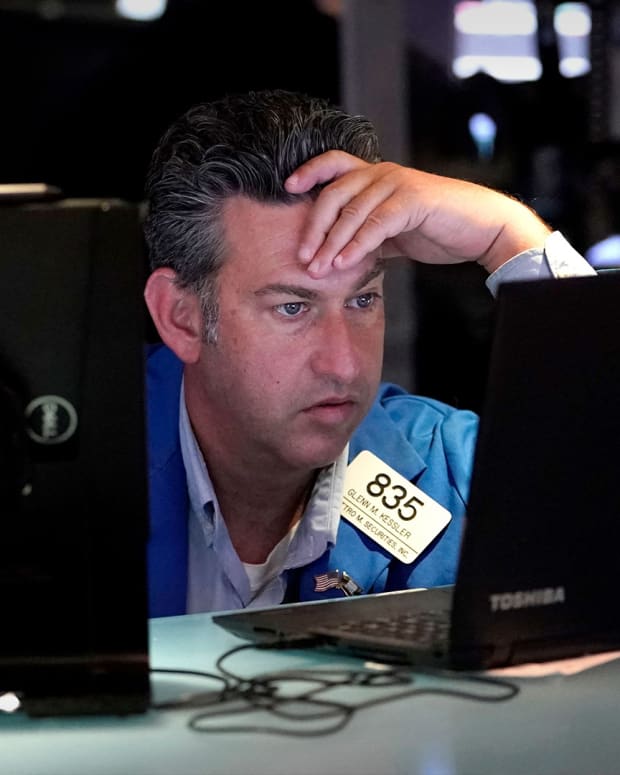Consumers are looking for every possible way to save money after facing increased inflation and higher costs, as companies grapple with a rise in labor expenses and supply chain bottlenecks.
Shoppers are also looking for ways to cut costs as their bills for groceries and gasoline have been rising steadily for several months.
“Consumer discretionary spending may not decline but it won’t likely grow as fast,” Greg McBride, chief financial analyst for Bankrate, a New York-based financial data company, told TheStreet.
Household goods are not easy to find right now and consumers are putting off large and expensive purchases that require loans and credit checks such as homes, cars, appliances or furniture.
They are also putting a halt to leisure activities such as travel and exercise equipment, according to a survey of 2,200 people polled in February by Morning Consult.
Wages have not kept up with the rates of inflation in many industries, leaving people with less disposble income to spend as they rack up more debt.
“Household budgets are being squeezed across the income spectrum, with debt levels moving higher and savings running down,” he said. “This will limit how much households have available to spend on discretionary items and also their willingness to spend it.”
Higher inflation rates have stretched across several industries, including food, energy bills, rents and even furniture. Inflation rose to 7.9% in February,
“Inflation is pervasive and it is still accelerating,” McBride said. “Next week’s Consumer Price Index isn’t going to be pretty. Only time will tell whether or not what we’re seeing now proves to be the peak in the rate of inflation.”
Here’s Where People Are SavingConsumers said they spent 8.4% more in February 2022 compared to February 2021, but their incomes only rose by 4.9%.
Even though tax refunds can fill the gap temporarily, the spending levels may not be feasible in the long run, the report said. The average refund in February was $2,845.
The Morning Consult survey showed that 74% of consumers chose to wait before purchasing a new car, with about half saying they did not want to pay the high prices, and 27% of that group said they wanted more inventory.
Housing prices have skyrocketed from a rise in demand and lack of inventory and the listing price for a home is now close to $400,000 based on data from Realtor.com. That almost $100,000 more than compared to three years ago and an increase of 13% from last year.
“The fact that so many U.S. adults did not purchase a car or home last month does not mean that they no longer need a car or home,” Morning Consult economic analyst Kayla Bruun wrote in the report.
Scroll to Continue
“Instead, it signifies a change in the way Americans view such buying decisions: They believe they are better off not making the purchase right now,” she writes.
Ways to Save MoneyConsumers are cutting back where they can, such as buying less meat at the grocery store, driving less to cut back on gasoline costs, eating at home more and refinancing student loans.
“There aren’t a lot of places to hide because inflation is so widespread,” McBride said. “This is one reason why discretionary spending is so susceptible to a slowdown because it may be the only area where households can throttle back at a time that the worst of the price increases are in areas that are necessities: food, shelter, gas and energy.”
Consumers will have to slash some of their expenses such as food, streaming services, gym memberships and other entertainment, Bruce McClary, vice president of marketing for the National Foundation for Credit Counseling, a Washington-based nonprofit organization, told TheStreet.
Even cutting back for a few months can give a budget some breathing room, he said.
“The choice doesn’t have to be all or nothing,” McClary said. “Either way, the results can have an immediate impact. Those who try to maintain discretionary spending levels without the savings, budget adjustments or income to offset price increases may become more reliant on credit cards and other available types of consumer credit.”
Use Your Debit Card or CashPaying for your discretionary items or other expenses via cash or a debit card can also curb some spending.
“Adjusting credit card spending is another area where some savings can be realized,” he said. “Ideally, avoiding interest by paying off your credit card balance within the current billing cycle is best for avoiding the additional cost of interest. Still, not everyone is in a position to do that.”
Shopping around for another credit card with a lower interest rate can be worthwhile.
“If you have a competitive credit score, you might be able to secure a more affordable rate or move your balances to a card that offers a temporary interest-free repayment period,”McClary said.
Shortening the time you drive by combining your errands can be one way to spend less money on gasoline.
“If you have a fuel-consuming car, your budget can benefit from lifestyle adjustments that consolidate necessary errands or reduce your reliance on your vehicle overall,” he said.
While some experts estimate that inflation is at or near its peak and will likely end the year on a downward trend, cash-strapped consumers are already paying higher prices at the pump.
“Fuel price hikes accounted for almost two-thirds of the most recent Consumer Price Index increase,” McClary said. “The ripple effect can be seen in the 1% January increase in food prices. When the fuel prices are brought under control, other areas of inflation are likely to benefit from price stabilization or reduction.”
